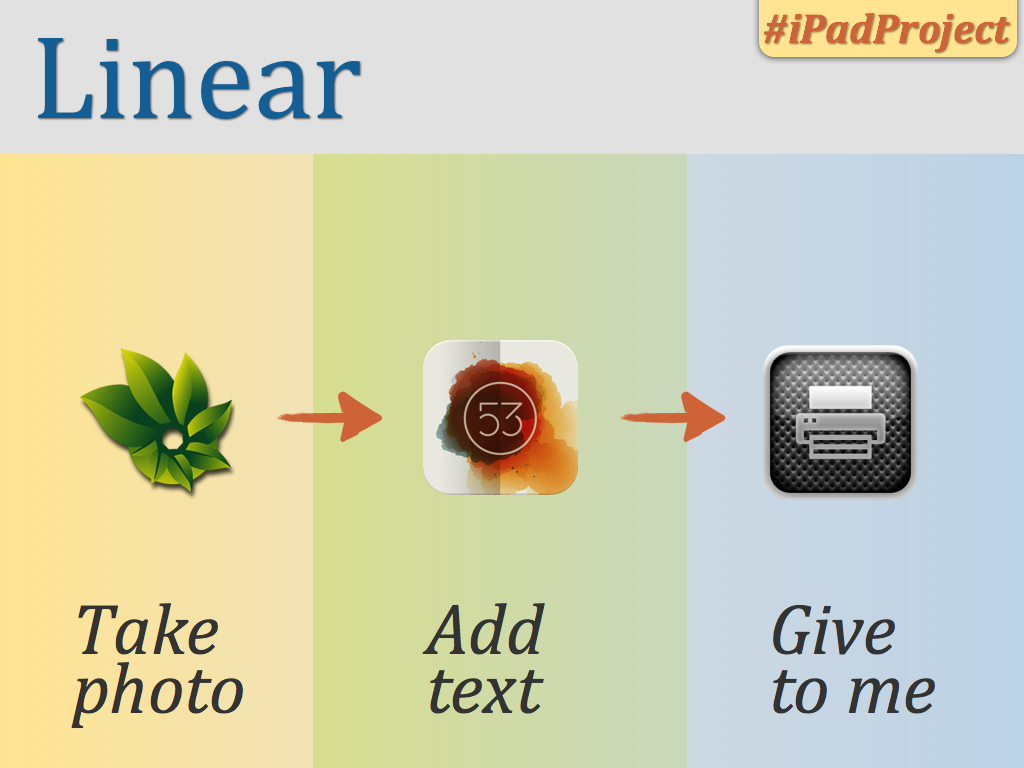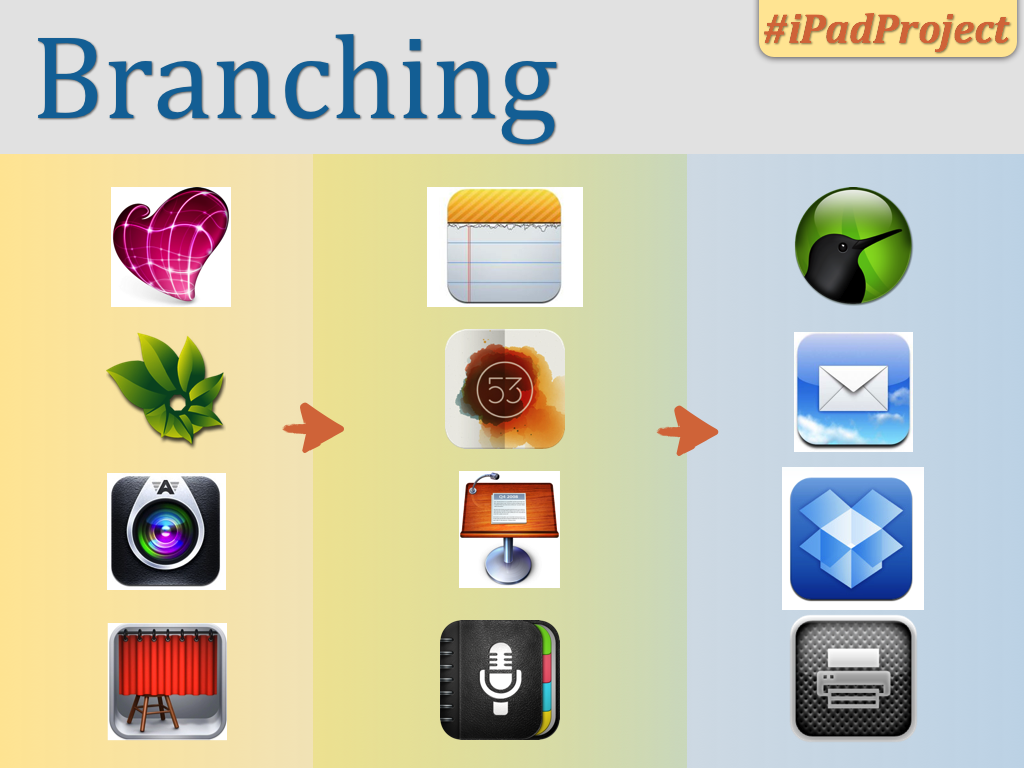A few weeks ago Ethan Delavan and I presented at the 2012 iPads in Education workshop, hosted by the Puget Sound Educational Services District. I hosted a session called Multi-Step Projects with a Single-Task Device that focused on providing choice within projects that use an iPad.
The heart of my session was the idea that, when assigning a project that requires multiple apps for completion, there is a big difference between dictating which app to use at which time (linear) and allowing students to design and follow their own path to success (branching).
The entire session was built around 2 quotes from fabulous educators:
Don’t worry, be vague.
– Physics teacher Ben Smith
If you assign a project & get back 30 of the same thing, you didn’t assign a project, you assigned a recipe.
– SLA principal Chris Lehmann
Consider the following assignment:
Design a poster that incorporates photography and expresses your perspective on how failure shapes learning.
A linear approach:
Each step of a linear version of this project would be provided along with the appropriate app to accomplish each task. If the process is teacher-defined, then the teacher is left to assess a student’s ability to follow the procedure, demonstrated mastery of each app prescribed, and adherence to any guidelines.
Self-reflection might look something like this:
I like Photosynth because it is pretty easy to use but Paper kept undoing my work so it was complicated. I turned in my poster on time and like it.

A branching approach:
In a branching assignment, students are left to break the assignment into actionable steps. Students will be required to think through each step and identify apps that will support each stage of completion, often engaging peers to compare notes. Because the process is student-defined, then the teacher can listen to students verbalize decisions for each step and ask guiding questions to encourage analysis, collaboration and discovery. “How did you decide to use Skitch for step 2? How would your project be different if you changed the order of your steps? Is there anyone else who used all of the same apps as you?”
A simple Project Planner document can be used as a post-project self-evaluation tool, as a planning document, or can be partially populated and provided as a scaffold for students who require support.
Self-reflection might look something like this:
I started this project in Screenchomp but the app only let me add 1 photo so I switched to Keynote. The poster is only a single slide in Keynote, but it is a better choice because Pages makes all posters in Portrait mode and I wanted my poster to be Landscape. When it was time to turn in my poster, I couldn’t get the printer to connect to my iPad even though I asked the teacher. I had to email my poster to the teacher instead.

While this presentation was focused on classroom projects using iPads, the idea of linear vs. branching projects is applicable beyond a device-centric application. The full slidedeck is embedded below (RSS feed readers may need to jump to Slideshare to view):